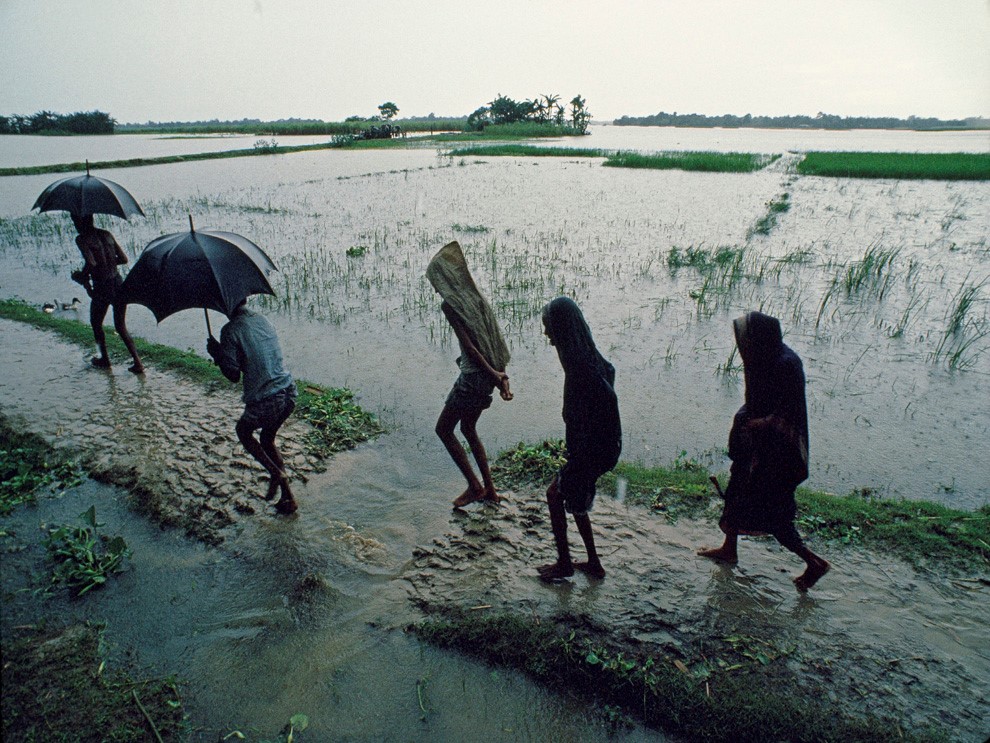Description

Disclaimer: Copyright infringement not intended.
Context
Rainfall rising in over half of India’s sub-districts, says four-decade study
Context Details
- About 11% of tehsils saw reducing rainfall, of which 87% saw a decline during the critical kharif sowing months; many districts saw extreme deficiencies and excesses in rainfall even during ‘normal’ monsoon years.
- Rainfall is increasing in more than half of India’s 4,400-odd tehsils or sub-districts, according to a granular analysis of changes in the Indian monsoon, conducted for the first time at the tehsil level.
- While 55% of tehsils have seen a rise in rainfall, about 11% of them have experienced decreasing rainfall. More worryingly, this decrease occurred largely during the critical southwest monsoon. In fact, of the tehsils experiencing lower rainfall, about 68% saw reduced rainfall in all the monsoon months from June to September, while 87% showed a decline during the initial monsoon months of June and July, which are crucial for the sowing phase of kharif crops.
- Most of these tehsils are in the Indo-Gangetic plains ( which contribute to more than half of India’s agricultural production ) as well as in northeastern India, and the Indian Himalayan region.
- The study authored by Shravan Prabhu and Vishwas Chitale of the Council on Energy, Environment and Water (CEEW), a research and policy think-tank — analyses high resolution meteorological data spanning four decades, from 1982 to 2022, which has been recorded by the India Meteorological Department (IMD).

Extremes at the district level
- India collectively experienced 29 ‘normal’, eight ‘above-normal’, and three ‘below-normal’ monsoon years during that period.
- But an analysis at the district level reveals that 30% of India’s districts witnessed several more years of deficient rainfall and 38% saw many years of excessive rainfall.
- 23 districts — including New Delhi, Bengaluru, Nilgiris, Jaipur, Kachchh, and Indore — experienced both extremes, with a higher number of both deficient as well as excessive rainfall years.
- Several tehsils in Rajasthan, Gujarat, central Maharashtra, and parts of Tamil Nadu, that have historically been dry regions have also been getting wetter, tying in with the finding that a majority of tehsils reported increasing rainfall.
- the study of localised wet rainfall extremes, found that nearly 64% of Indian tehsils experienced an increase in the frequency of heavy rainfall days by 1-15 days per year in the past decade during the southwest monsoon.
- This pattern is prominent in the tehsils of States with the highest GDPs — Maharashtra, Tamil Nadu, Gujarat, and Karnataka. Furthermore, we found that in the tehsils experiencing an increase in rainfall during the southwest monsoon, the excess is coming from short-duration, heavy rainfall events.
Increasingly erratic rainfall patterns
- Rainfall from the northeast monsoon (that sets in during October, November and December, primarily in peninsular India) has increased by more than 10% over the last decade (2012-2022) in approximately 80% of tehsils in Tamil Nadu, 44% in Telangana, and 39% in Andhra Pradesh, respectively.
- The southwest monsoon accounts for nearly 76% of India’s annual rainfall, with about 11% coming from the northeast monsoon. While the remaining Indian States are usually dry during this period, several tehsils of Maharashtra and Goa on the west coast and Odisha and West Bengal on the east coast have also been reporting increasing rainfall during these winter months.
- This increase could partly be be attributed to cyclonic activity in the Arabian Sea and the Bay of Bengal.
.jpg)
Way ahead
As India readies for the Union Budget, it will be crucial to focus on future-proofing the economy against increasingly erratic rainfall patterns. The monsoons impact the food we eat, the water we drink and also our energy transition. With increasing extreme weather events, hyper-local climate risk assessments and action plans are the way to go for India to keep leading in climate action and disaster risk reduction. This will help save lives, livelihoods and infrastructure.
|
PRACTICE QUESTIONS
Consider the following statements:
- The duration of the monsoon decreases from southern India to northern India.
- The amount of annual rainfall in the northern plains of India decreases from east to west.
Which of the statements given above is/are correct?
A.1 only
B.2 only
C.Both 1 and 2
D.Neither 1 nor 2
Answer C
|
















